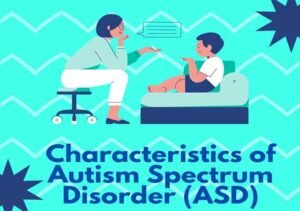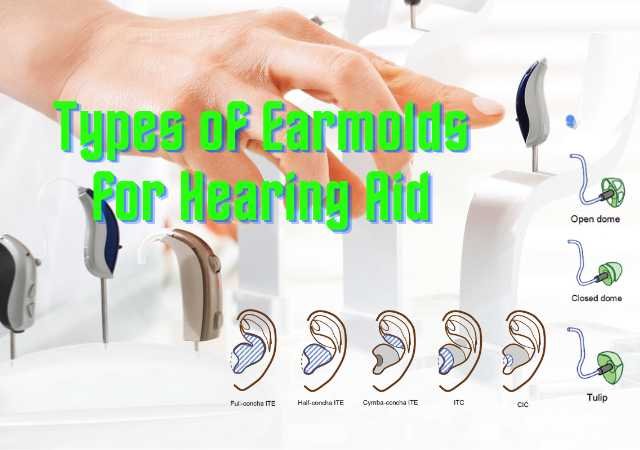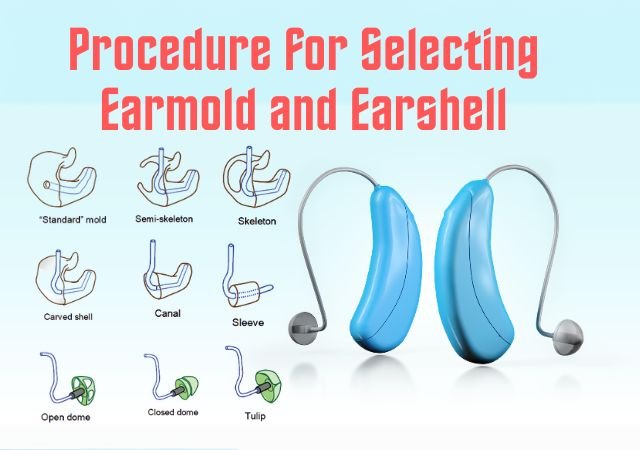
Characteristics of Autism Spectrum Disorder (ASD): It’s essential to remember that autism is a highly variable condition, and each individual with autism is unique. Some individuals may have more pronounced characteristics in some areas, while others may have milder features or exhibit strengths in certain aspects. Early intervention and individualized support can significantly improve the quality of life for people with autism by addressing their specific needs and strengths.
Characteristics of Autism Spectrum Disorder (ASD)
Understanding the Characteristics of Autism Spectrum Disorder (ASD) requires a nuanced and informed approach. We have touched upon various aspects of ASD, from its defining characteristics to the importance of early identification and seeking professional guidance.
Remember, each individual with ASD is unique, and a personalized approach to intervention and support is key. By staying informed and promoting awareness, we contribute to a more inclusive and understanding society.
Autism Spectrum Disorder Signs
Early Childhood Indicators: The Centers for Disease Control and Prevention (CDC) offers comprehensive information on early childhood indicators of ASD (CDC).
Narrowed Interests: The National Autistic Society in the UK provides resources on the narrowed interests often observed in individuals with ASD (National Autistic Society).
Difficulty with Change: Research articles from the Journal of Autism and Developmental Disorders contribute to our understanding of difficulties with change in individuals with ASD (Journal of Autism and Developmental Disorders).
Repetitive Behaviours
Repetitive behaviours, such as hand-flapping, rocking, or the need for strict routines, are common in those with autism. These behaviours provide a sense of comfort and predictability.
- Making repetitive motions with your hands, such as flapping or rocking.
- Insistence on sameness and routines; resistance to changes in daily routines.
- Focusing intensely on specific interests or hobbies.
- May become overwhelmed by sensory input or seek sensory stimulation.
Unusual or unique responses to sensory experiences, which can vary greatly among individuals
Sensory Sensitivities
Sensory sensitivities are a common feature of Autism Spectrum Disorder (ASD). Individuals with autism often experience atypical responses to sensory stimuli, which can impact their daily lives. Heightened or diminished sensitivities to sensory stimuli, such as lights, sounds, textures, and smells.
- Hyper-Sensitivity: Some individuals with autism are hypersensitive to sensory stimuli, which means they are highly sensitive to sensory input. This heightened sensitivity can lead to sensory overload and discomfort. Common examples include:
- Auditory Sensitivity: Noises that others may not notice, like a humming refrigerator or distant conversations, can be distressing for individuals with auditory sensitivity.
- Visual Sensitivity: Bright lights, flickering lights, or intense visual patterns may cause discomfort or even pain.
- Tactile Sensitivity: Certain textures, clothing materials, or even light touches may be perceived as irritating or painful
- Hypo-Sensitivity: On the other hand, some individuals with autism may experience hyposensitivity, which means they have a reduced sensitivity to sensory input. This can lead to seeking out sensory stimulation and engaging in repetitive behaviours to stimulate their senses. Examples include:
- Proprioceptive Hyposensitivity: Difficulty perceiving where their body is in space, which can lead to clumsiness and seeking out activities that provide deep pressure or sensory input.
- Vestibular Hyposensitivity: Reduced sensitivity to balance and movement sensations, which may lead to a preference for activities like spinning or swinging.
Challenges in Executive Function
- Difficulty with planning, organizing, and managing tasks.
- Struggles with time management and completing assignments.
Impaired problem-solving and decision-making skills.
Behavioural Challenges
- Tantrums and Meltdowns (Frustration, change in routines, or sensory overload can lead to tantrums and meltdowns in individuals with autism)
- Self-Stimulatory Behaviours (Self-stimulatory behaviours, also known as stimming, are common in autism. These actions can include hand-flapping, spinning objects, or repeating certain phrases.)
Autism Spectrum Disorder Symptoms
Social Challenges
Social interaction can be a significant challenge for individuals with autism. They may find it difficult to form and maintain relationships and understand social cues and norms.
- Difficulty with social interactions and forming relationships.
- Difficulty with understanding and interpreting social cues, such as body language and facial expressions.
- Struggles with making and maintaining eye contact.
- Limited interest in or understanding of sharing emotions and experiences with others.
Communication Differences
Individuals with autism often struggle with verbal and non-verbal communication. This may include limited speech, difficulty understanding gestures, and challenges in making eye contact.
- Delayed speech and language development in some individuals.
- Difficulty with verbal and nonverbal communication, such as gestures and facial expressions.
- Repetitive or limited speech patterns and interests.
- Difficulty in initiating or sustaining conversations.
Sensory-Seeking Behaviours
Some autistic people use sensory-seeking behaviors to satisfy their sensory requirements. These behaviours may include flapping hands, rocking back and forth, or repetitive actions like spinning objects. These actions help them regulate their sensory experiences.
- Difficulty Filtering Sensory Input: Many individuals with autism struggle to filter or prioritize sensory information. They may become overwhelmed by the sheer amount of sensory input in their environment, making it challenging to focus or engage in activities.
- Coping Mechanisms: People with autism often develop coping mechanisms to manage their sensory sensitivities. This may include wearing noise-cancelling headphones, sunglasses, or specific clothing to reduce sensory input. It can also be beneficial to create a routine and orderly workplace.
- Individual Variability: Sensory sensitivities can vary widely among individuals with autism. What is distressing or soothing for one person may be different for another. Therefore, it’s crucial to understand and accommodate each person’s unique sensory profile.
- Strong Interests:
- Developing intense and focused interests in specific topics or objects.
- Displaying deep knowledge in particular areas of interest.
- May engage in repetitive behaviours related to these interests.
Differences in Social and Emotional Understanding
- inability to relate to and comprehend the feelings and viewpoints of others.
- Challenges in recognizing and responding to emotional cues.
- May have a more logical or concrete thinking style.
FAQs about Characteristics of Autism Spectrum Disorder (ASD)
1. What are some early indicators of Autism Spectrum Disorder (ASD) in children?
Early indicators of ASD in children can include delayed speech and language development, difficulty with social interactions, repetitive behaviors, and intense focus on specific interests. Organizations like the Centers for Disease Control and Prevention (CDC) offer comprehensive information on these indicators.
2. How do sensory sensitivities impact individuals with ASD?
Sensory sensitivities in ASD vary widely, with some individuals being hypersensitive (overly responsive) to sensory stimuli, while others may be hypersensitive (under-responsive). These sensitivities can affect responses to lights, sounds, textures, and smells, leading to discomfort or seeking sensory stimulation.
3. What behavioral challenges are common in individuals with ASD?
Individuals with ASD may experience difficulties in managing change, maintaining routines, and regulating emotions, often leading to tantrums or meltdowns. Additionally, engaging in self-stimulatory behaviors, known as stimming, is common among autistic individuals.
4. How do individuals with ASD typically experience social interactions?
Social interactions can be challenging for individuals with ASD, who might struggle with understanding social cues, maintaining eye contact, forming relationships, and sharing emotions. Difficulties in both verbal and non-verbal communication are common.
5. What are some coping mechanisms for managing sensory sensitivities in ASD?
People with ASD often use various coping mechanisms to manage sensory sensitivities, such as wearing noise-canceling headphones, creating routines, or using specific clothing to reduce sensory input. Understanding individual sensory profiles and accommodating them is crucial for better support.
References:
- “The Complete Guide to Asperger’s Syndrome” by Tony Attwood. [Book]
- “Neurotribes: The Legacy of Autism and the Future of Neurodiversity” by Steve Silberman. [Book]
- “Thinking in Pictures: My Life with Autism” by Temple Grandin. [Book]
- Language Disorders from Infancy to Adolescence 4th Edition – Rhea Paul [Book]
- Assessment in Speech Language Pathology A Resource Manual 5th Edition, Kenneth G. Shipley, Julie G. McAfee [Book]
- The American Academy of Pediatrics (AAP) in their guidelines on developmental surveillance and screening (AAP).
- The National Institute of Mental Health (NIMH) provides insights into the social challenges faced by individuals with ASD (NIMH).
- Research from the Autism Science Foundation sheds light on the various communication differences observed in individuals with ASD (Autism Science Foundation).
- The work of Dr. Temple Grandin, a renowned expert with ASD, provides valuable insights into sensory sensitivities (Dr. Temple Grandin).
You are reading about:
Characteristics of Autism Spectrum Disorder (ASD)







0 Comments